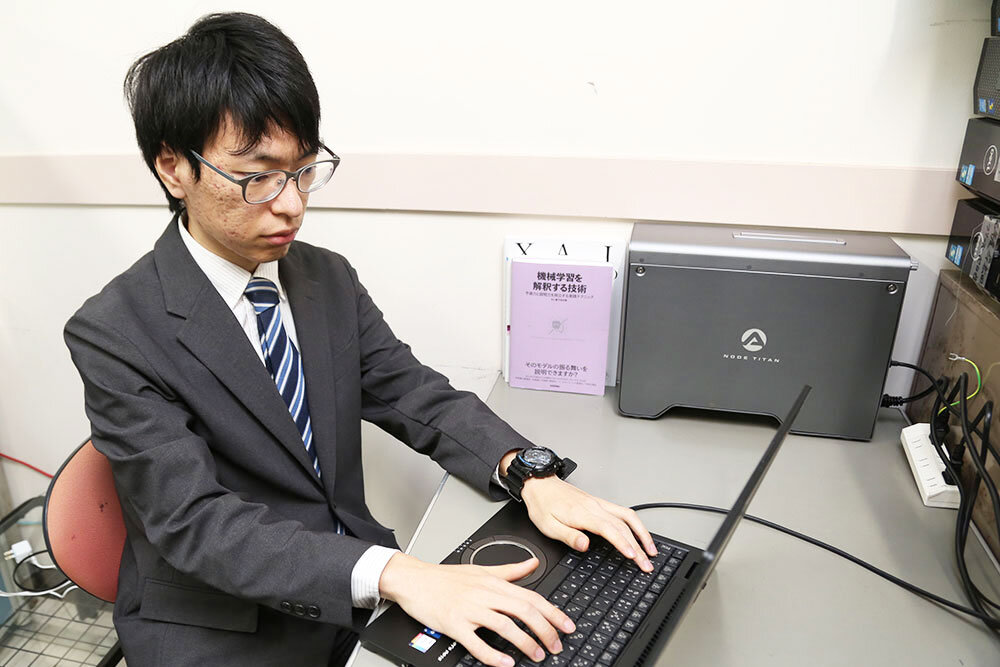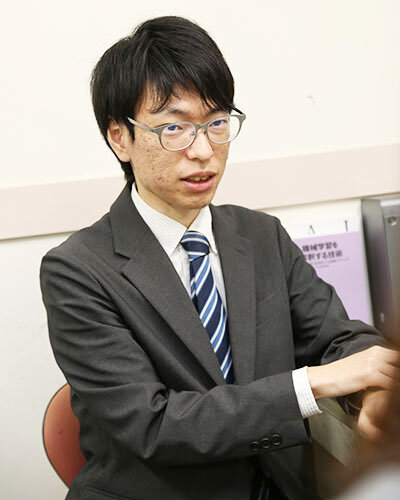INTRODUCTION学生紹介
- HOME
- support
- Student Introduction
- IGARASHI SHINNOSUKE
STUDENT INTRODUCTION
Marine Resources and Environment
IGARASHI SHINNOSUKE
Specializations:Marine Resources and Energy
Main academic advisor:UCHIDA, Keiichi
Mentor:WU, Lianhui / MIYAMOTO, Yoshinori

Learning AI expanded my world—I now have the tools to create knowledge that I could never have even imagined before
Using color to study microplastics unique to different marine areas
My research involves determining if we can use the color of microplastics in the ocean to infer their source or estimate their volume.
Although findings have not been published, empirically speaking, there appears to be a lot of microplastics of certain colors in some marine areas. I heard that each marine area has its own characteristics--for example, Tokyo Bay has a lot of green plastic, while the coasts of areas with many plastic greenhouses for farming have a lot of clear plastic. I wondered if examining these characteristics in detail would yield new methods of evaluation, and thus began my research.
I decided to examine colors based on historical offshore drift data from the Ministry of the Environment. Initially, I classified the colors visually, but that was problematic. Take the color green, for example. There are many different shades, and if I looked at them for too long, I would start classifying some of them as blue. I realized that I needed quantitative criteria for the classification, so I decided to use image analysis software to quantify the colors. I was dealing with a very large amount of data, however, so I decided to try to have them classified automatically, and my research toward that end led me to artificial intelligence.
Studying in the WISE Program to gain the ability to envision and understand AI technology
 I was actually able to classify the data without using AI, but I had started to learn Python, and the WISE Program offered the opportunity to learn it in tandem with AI, so I decided to apply.
I was actually able to classify the data without using AI, but I had started to learn Python, and the WISE Program offered the opportunity to learn it in tandem with AI, so I decided to apply.
One of the noticeable ways in which I grew under the WISE Program was gaining the ability to envision and understand AI technology. Before, things like deep learning and machine learning seemed to be so far beyond my understanding that I could not imagine what they were. But as I progressed through the WISE Program, I began to understand them, and my resistance to doing statistical work with data science disappeared. I feel as though my world has expanded, because now I have the tools to create knowledge that I could never have even imagined before.
Although I have yet to use what I have learned about AI directly in my research because I was able to classify the colors without using deep learning, I feel that it was worthwhile to study AI as an end in itself.
I am using what I learned in the WISE Program in areas other than my research. For example, I used AI to create a Feret diameter classification system for reporting marine microplastic measurements to the Ministry of the Environment. While it works well enough now, I am looking for ways to make it more user-friendly.
I believe the relationship between Feret diameters and hues could be useful in my research, so I plan to link my system to it in the future.
WISE Program's RA system as motivation for research
The WISE Program has various support systems, and the one I use most is the research assistant (RA) system under which you report your research and receive an hourly wage for the time you spent. You can also receive cash benefits for routine research activities as long as they are related to AI, although there is an upper limit. The cash benefits are much appreciated, and motivating for research.
I also appreciate the opportunities to engage with companies through internships. In October and November, I worked on plastic waste research at the Japan Agency for Marine-Earth Science and Technology. I took over from my predecessor a part of their system that automatically classifies marine plastic waste using hyperspectral cameras, and was in charge of building the system for the classification.
This internship was very informative for me because the research was quite similar to my own. Another great benefit was exposure to the very sophisticated code written by my predecessor, a professional programmer. The code was much easier to read and understand than anything I had ever seen online. It was extremely worthwhile for me to see model examples of things similar to my own research, and I intend to participate in internships in the future if opportunities arise.
Becoming a researcher of marine debris
They say that microplastics are irrecoverable from the ocean, and untraceable once they reach the water. If my research progresses and I can learn more about what happens to microplastics in the ocean, I may be able to provide clues as to how to recover them. Also, if we can identify sources of microplastics, we can take steps to prevent them from ever reaching the ocean.
I enrolled at Tokyo University of Marine Science and Technology because I love the ocean, and I want to continue to do marine-related research in the future, specifically involving marine debris.

